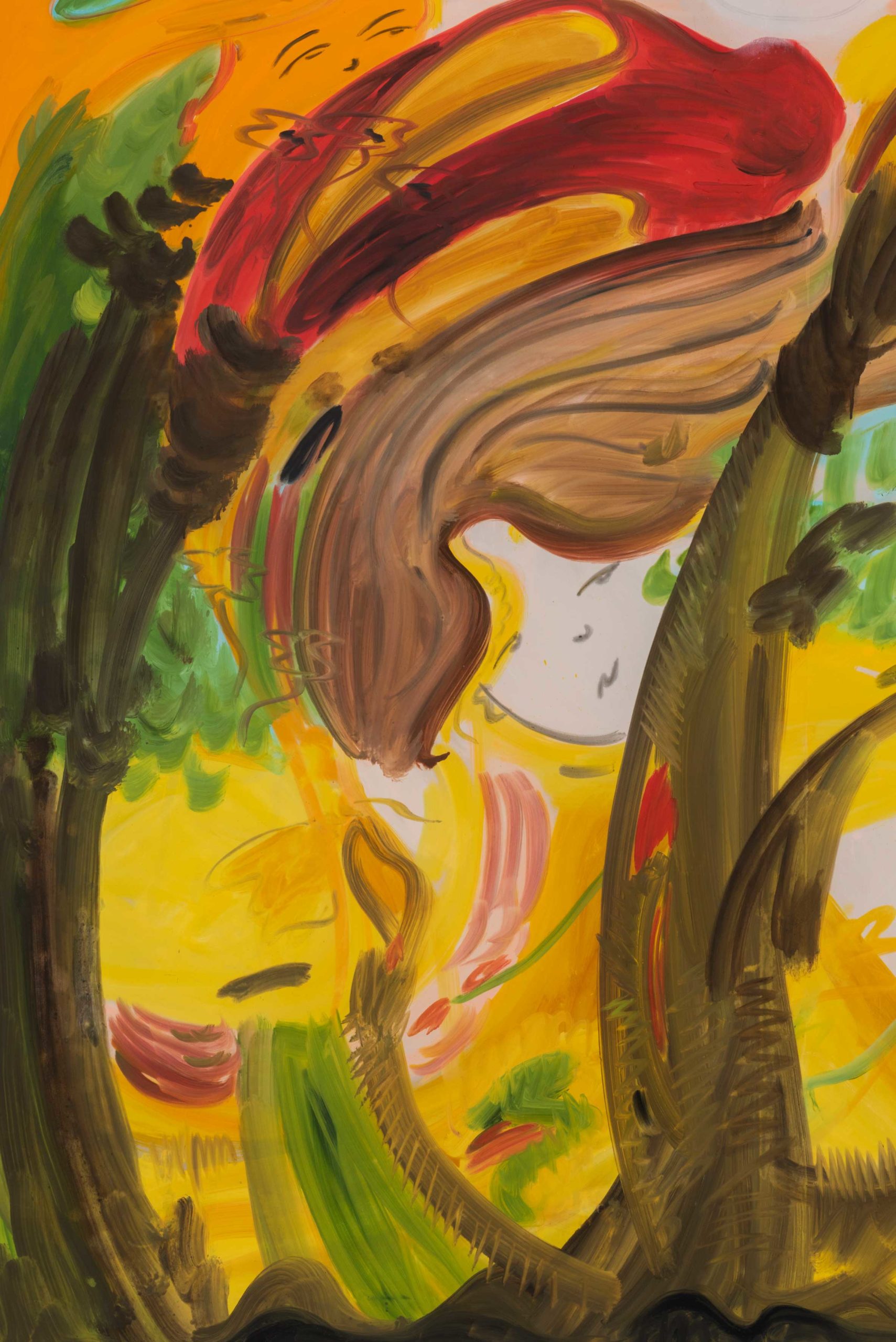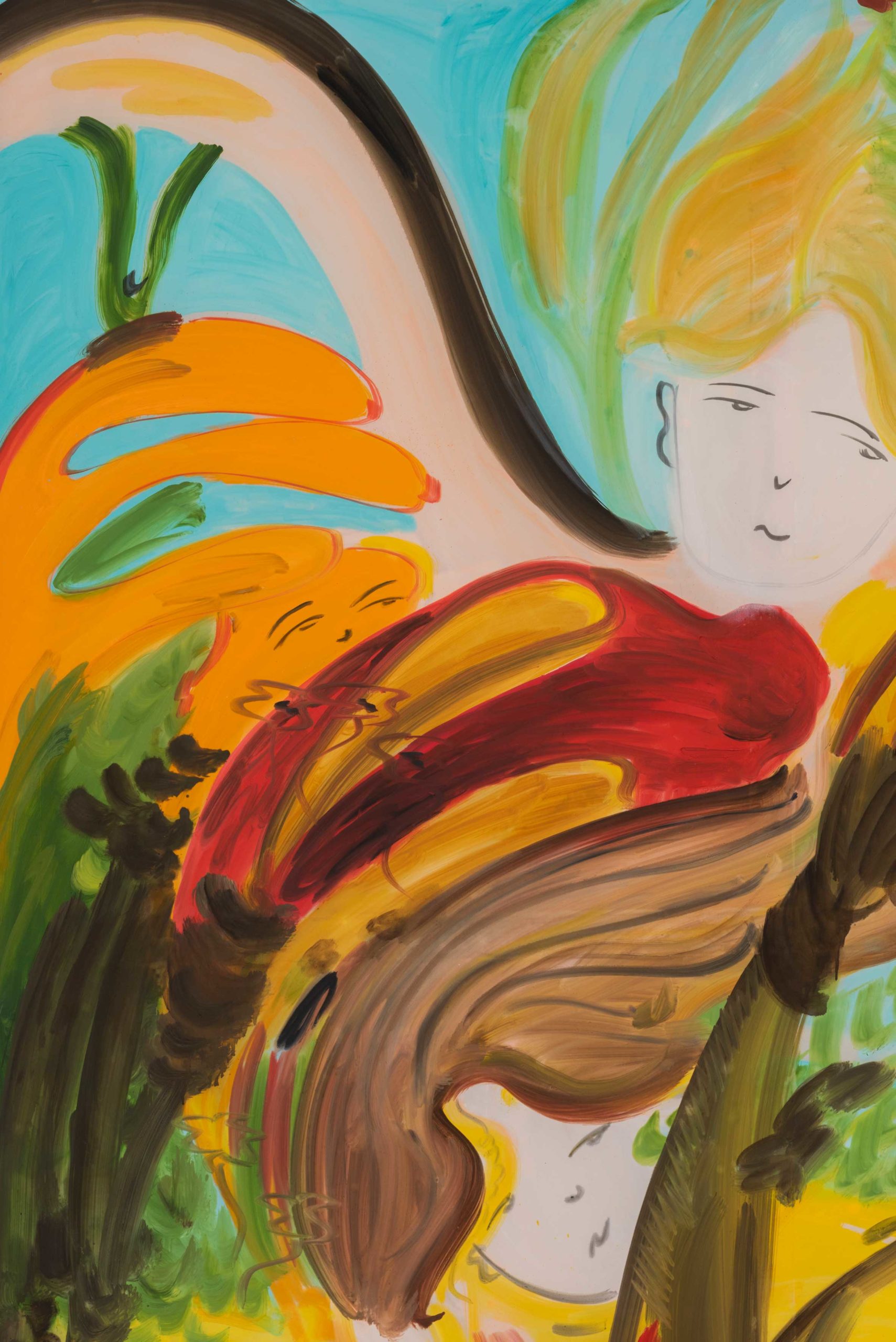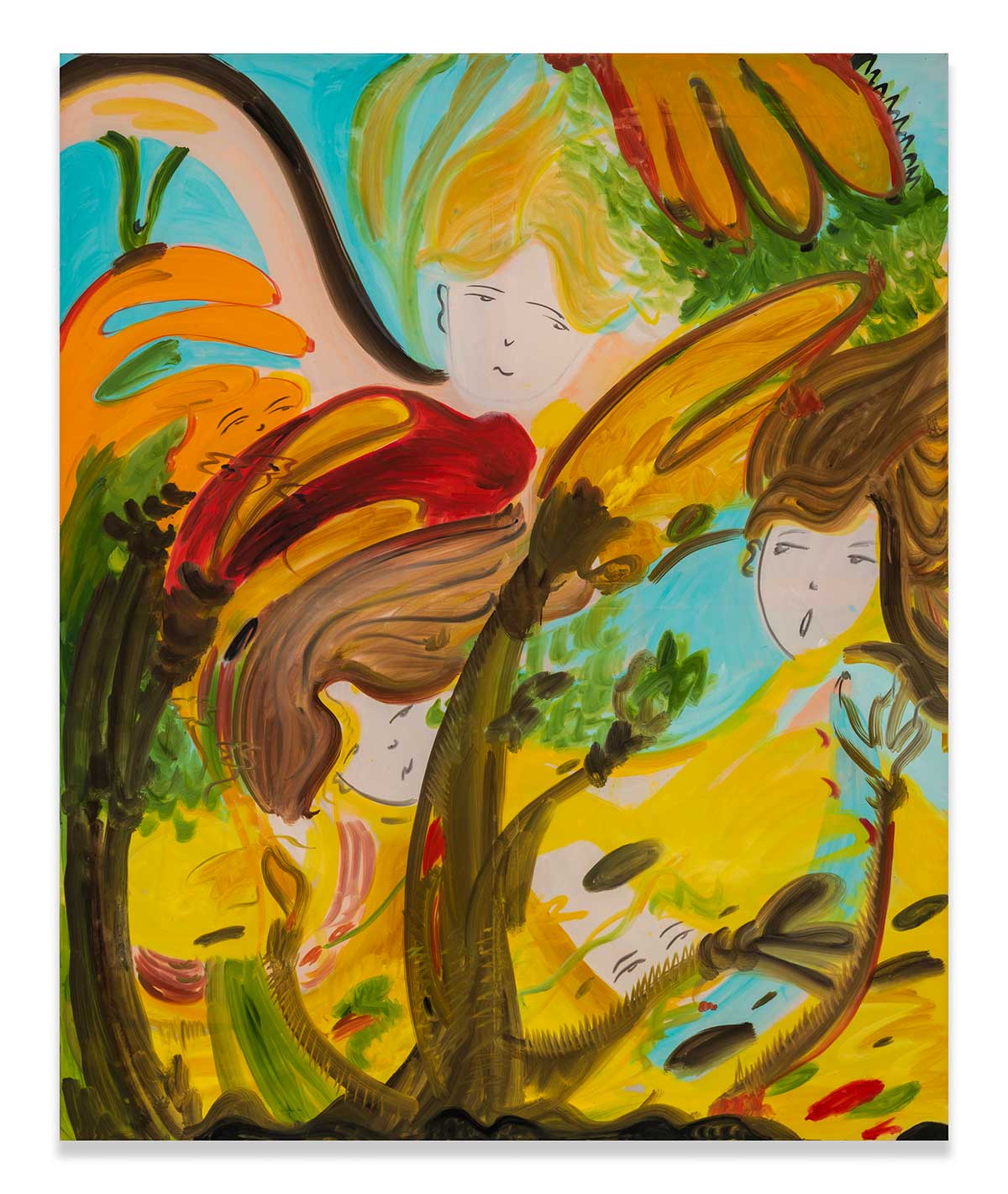
Detail from 'Grotto', 2020, Yulia Iosilzon
Before Yulia Iosilzon’s canvases are laden with their characteristic mythical figures, lyrical patterns, and fantastical scenery, they are first doused in colour. The artist’s process is methodical. Iosilzon begins by drawing and shifting various scenes and colours, often linking multiple works within the same imagined narrative. The inspiration for Fanfarria grew from Iosilzon’s fascination with a pink, orange, and green palette. Intermingling these three elementary colours, the artist has produced a body of work that, while retaining an undercurrent of austerity, is inherently playful at its core.
The artist’s influences are widespread, although she often cites theatre, fashion, and children’s literature as points of reference. Of Fanfarria, Iosilzon describes her interest in Japanese animation, propaganda, and Jewish symbolism. More so, Iosilzon’s compositions appear reminiscent of the marginalia and illuminations within medieval manuscripts: absurd, intricately detailed, and executed with brilliantly vivid colouration. As such, her lyrical compositions are crammed with a variety of disparate stimuli, handpicked and amalgamated into a single, electric space. These influences coexist in harmony, a snippet of Studio Ghibli-esque scenery sits snugly beside a serpent, an ever-prevalent character within the Hebrew bible. These elements appear to call out to one another, as if questioning the origins of their companions.

Detail from ‘Grotto’, 2020. Yulia Iosilzon
Grotto (2020) was the first piece created for Fanfarria, establishing the calibre of the subsequent body of work. Certainly, it is one of Iosilzon’s most confident paintings, boasting its glittering colouration and dizzying force of motion with an unparalleled buoyancy and vitality. As a rule, each work in Fanfarria includes cartoonish depictions of human faces, implemented in a simplistic and lighthearted style, preventing the works from falling into a hallucinatory flurry of abstraction. Iosilzon explains that these impish characters are not figurative, but represent the unspoken moods and emotions that we often fall subject to. To further emphasise Grotto’s vigorous approach, the painting includes five elfin faces nestled within its composition, whereas other works include only one or two. Three of these faces are clearly defined, their skin rendered pale amongst the iridescent outburst, their features marked with measured brushstrokes. Two of the faces are subtler, composed of fleeting lines forming only the suggestions of eyes and eyebrows. These faces peer from within the painting’s chaotic reverie, silently observing while remaining unnoticed.
Mindful of her pieces’ materiality, Iosilzon quietly marries the textured fabrics she paints on with her free-flowing patterns and watercolour-esque brushwork. While Grotto’s transparent cloth is secured onto canvas, one can still imagine its sheer depth of movement, as if billowing and warping in a non-existent breeze. Iosilzon drives this body of work with a confident use of colour, affording each piece with an established palette of glistening hues. Her work is then supplemented with an array of diverse influences, intricate patterns, and gestural brushwork, ultimately producing a collection of unhindered dreamscapes
(By Eleanor Lerman)
